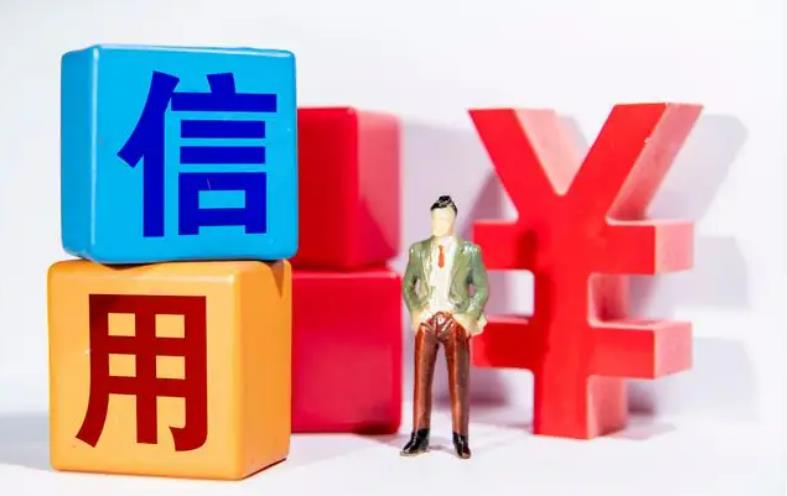实训项目四:在英译中的过程中避免歧义
一、实训目标
通过实训,使学生关注以英文为原文的涉外法律文书的中文译文的歧义问题,并能够运用业已掌握的有关知识,分析这些有关的歧义并尝试提出解决方案。通过实训,使学生理解在中文译文中表述英文原文的句法歧义的几项要点,并在实践中贯彻这些要点。通过实训,使学生针对英译中过程中所出现的不同类型的歧义方式,灵活运用多种方法给予处理,争取最大限度地避免歧义、消除歧义。
二、实训原理
有的时候,在起草双语法律文本时,律师或译者无法修改英文原文,而只能按照英文文本准备中文译文。在这种情况下,英文原文的歧义没有办法消除。为了保持两个文本的一致,英文文本的歧义要在中文文本中体现出来。因此本实训项目着重要讨论的就是,将英文译成中文时如何表述英文原文中的歧义。
中文译文如何表述英文原文中的歧义,是翻译工作者需要特别重视的问题。尤其是在涉及法律文件的时候,稍有不慎就可能造成重大的失误。我们将处理英文原文中句法歧义问题的方法,总结成了以下十个要点:
第一,双语合同的起草,要求在表述中、英两种文本的歧义时,尽可能地与语法和文体的限制相一致,以使中、英两种文本表达同样的意思,并具有同样的法律效力。第二,英文原文中有许多种不同类型的句法歧义,但后修饰语以及状语短语引起的歧义仍然是句法歧义中的重点。第三,在英文法律文本中后修饰语是常见的,但在中文法律文本中则很少见。第四,在中文法律文本中,常用的,而且几乎是唯一使用的形式是前修饰语,而不是后修饰语;但在英文中,更常见的却是后修饰语。第五,在英文和中文中,前修饰语通常修饰后面所有的并列成分。但是,后修饰语常常不修饰前面所有的并列成分,而只修饰最后一个。第六,英文法律文本中的后修饰歧义一般不能在中文译文中重现。第七,英文法律文本中后修饰语的歧义免不了在中文翻译中加以消除。第八,只有了解如何运用语言和法律推定,了解文件的背景,以及了解相关的法律,才能正确消除歧义。第九,译者,如果他/她不是律师,则他/她可能会了解文件的文本以及如何运用语言推定,但可能会不了解文件的背景或相关的法律问题;因此,他/她必须在为处理歧义作出努力的时候寻求律师的确认,并告诉律师他/她所作的选择。第十,译者可采用在英文原文文本上对后修饰语歧义加以注解的方式来提请律师注意,以便律师知悉这些歧义并检查中文译文。
下面就不同类型的歧义及其处理予以分别讨论:
(一)共同或分别连词的歧义(用系列逗号消除连续列举或系列中的歧义)
选自一份合同。
原文:“Manufacturer will supply mobile phones in the following colors:silver,pink, blue and black .”
“制造商将供应下述各种颜色的手机:银色的、粉红色的、蓝色的 和黑色的 。”
“blue and black”这样的说法在英文原文中存在歧义。它可能是指一些蓝色的手机和一些黑色的手机,但也可能是指一些蓝色与黑色相间的手机。
如要使英文原文表示一些蓝色的手机和一些黑色的手机,就应在“blue”后加一个逗号:
a.“Manufacturer will supply mobile phones in the following colors:silver,pink,blue,and black.”
“制造商将供应下述各种颜色的手机:银色的、粉红色的、蓝色的 和黑色的 。”
如要表示的颜色是蓝色与黑色相间的混合色,就应在“blue and black”之间用一个连字符:
b.“Manufacturer will supply mobile phones in the following colors:silver,pink,blue-and-black.”
“制造商将供应下述各种颜色的手机:银色、粉红色、蓝色 与黑色相间的手机 。”
如何用中文来表示相同的意思呢?该例原来的中文译文是否包括了a和b两种含义呢?中文为母语者可能会说,是的,该例英文原文中的歧义,中文译文同样可以表示出来。
(二)系列逗号的例外情况
1.系列逗号限制前修饰语的范围
选自一项市政府法令。
a.“The Health Inspector may close a restaurant because of fire hazards,unhygienic facilities and air quality.”
“因为火灾隐患、 不卫生的 设施和空气品质等原因,卫生检查人员可关闭一家饭店。”
b.“The Health Inspector may close a restaurant because of fire hazards,unhygienic facilities,and air quality.”
“因为火灾隐患、不卫生的设施、空气品质等原因,卫生检查人员可关闭一家饭店。”
前修饰语“unhygienic”是只修饰“facilities”,还是对“facilities and air quality”都修饰?a似乎不存在歧义,“不卫生”既修饰“设施”,也修饰“空气品质”。b英文原文在“facilities”后面有一个逗号,这个逗号表示“unhygienic”不修饰“air quality”,它限制了前修饰语的范围。在相应的中文译文中则不用逗号而用顿号。中文为母语者认为,这个顿号起到了与英文文本中的逗号同样的作用。
2.系列逗号限制了后修饰语的范围
选自一项《特许经营税法》。
a.“The term‘holding company’means any corporation at least sixty percent of the total assets of which consist of stock,securities or indebtedness of subsidiary corporations.”
“‘控股公司’这一术语是指任何公司的至少60%的总资产是由 各子公司 的股票、证券或债券组成的。”
b.“The term‘holding company’means any corporation at least sixty percent of the total assets of which consist of stock,securities,or indebtedness of subsidiary corporations.”
“‘控股公司’这一术语是指任何公司的至少60%的总资产是由股票、证券或 各子公司 的债券组成的。”
后修饰语“of subsidiary corporations”是否既修饰“stock and securities”,也修饰“indebtedness”?英文原文可以在“securities”的后面加一个逗号,以表明“of subsidiary corporations”只修饰“indebtedness”,而不修饰“stock and securities”(见b)。
这里中文译文的表述和英文原文基本相同,只是把词序调整了一下。a把修饰语放在所有三个并列成分前:“各子公司的股票、证券或债券。”b把“各子公司的”放在最后一个并列成分前,因此,它只修饰债券。但是,a中的英文存有歧义,而a中的中文没有歧义。这就是英文的后修饰语与中文的前修饰语的不同。因此中文译文似乎不能表达英文原文的歧义。这就是为什么在起草中英文双语合同时要尽量想办法消除英文文本中的后修饰歧义的原因。
(三)前修饰语和后修饰语的歧义(用连字符和短语形容词消除英文修饰的歧义)
选自一项法令。
原文:“A pupil must not,on the ground of religious belief,be excluded fromor be placed in an inferior position in any school,college or hostel provided by the council.”
“在任何学校、学院或 委员会提供的 任何宿舍里,不得因宗教信仰原因将学生排除或置于卑贱的地位。”
这里有一个棘手的问题,即英文原文有歧义,但中文译文却没有歧义。在大多数情况下,我们会假定例句中的后修饰语修饰“school,college or hostel”这三个并列成分。但如果把它译成中文,就不能表达英文原文中的歧义,而英文原文之所以有歧义,是由于它可以表达下面两种不同的意思:
a.“A pupil must not on the ground of religious belief,be excluded from or be placed in an inferior position in any council-provided school,college or hostel.”
“在任何 委员会提供的 学校、学院或宿舍里,不得因宗教信仰原因将学生排除或置于卑贱的地位。”
b.“A pupil must not,on the ground of religious belief,be excluded from or be placed in an inferior position in any hostel provided by the council or in any school or college.”
“在 委员会提供的 任何宿舍里,或在任何学校或学院里,不得因宗教信仰原因将学生排除或置于卑贱的地位。”
如a,若想非常清楚地表达“provided by the council”修饰每一个并列成分的意思,就应把修饰语改成短语形容词 council-provided ,并将其作为前修饰语,以明确它修饰所有三个并列成分。中文译文也可像英文一样把修饰语放在前面。
如b,把次序颠倒一下,把“hostel provided by the council”放在前面,然后才说“any school or college”,这就毫无疑问了,provided by the council只修饰“hostel”。中文译文也可以这样做。问题是该例原来的中译文基本上和b的意思相同,没有歧义。但原来的英文意思则既可以是a,也可以是b。
(四)英文否定式后跟从句引起的歧义
选自一份合同。
原文:“Owner may not deny requests for time extensions because of anticipated labor disputes.”
“雇主不得拒绝因预见的劳动争议而延长时间的要求。”
这又是一个英文原文有歧义而中文译文没有的例子。英文原文可以有下面两种意思:
a.“Owner may not deny,because of anticipated labor disputes,requests fortime extensions.”
“雇主不得因预见的劳动争议而拒绝延长时间的要求。”
b.“Owner may not deny requests for time extensions that arise because of anticipated labor disputes.”
“雇主不得拒绝因预见的劳动争议而引起的延长时间的要求。”
英文原文的意思既可以是a,也可以是b。但句中原来的中译文的意思基本上和a相似,而不包含b的意思。
(五)英文限制性和非限制性从句的歧义
中文可以很好地表达这一类的歧义。
选自一份合同。
原文:“Contractor shall use Olnar bearings which aremanufactured in Germany.”
“承包商应使用 在德国制造的 Olnar轴承。”
从句“which are manufactured in Germany”在这里可能是限制性的,因为没有逗号。但是它用了“which”,所以也可能是非限制性的。这样就有歧义了。但是中文是限制性的,没有歧义。如果要更清楚地表明这是个限制性从句,可以这样说:
a.“Contractor shall use Olnar bearings that are manufactured in Germany.”
“承包商应使用 在德国制造的 Olnar轴承。”
中文仍译成“在德国制造的”。中文的a和原文的中译文是一样的。
b.“Contractor shall use Olnar bearings, which are manufactured in Germany.”
“承包商应使用Olnar轴承,它们是 在德国制造的 。”
当非限制性从句出现在句末的时候,中文把它译成另外一个句子。所以,中文译文可以正确地反映这些限制性和非限制性从句,但是原来的中译文没有表达英文的歧义。
c.“Contractor shall use German-manufactured Olnar bearings.”
“承包商应使用 德国制造的 Olnar轴承。”
c说明,你可以在英文原文中使用前修饰语,也可以在中文译文中使用。
但是,“German-manufactured”这个短语本身存在歧义。它的意思可能是“在德国制造的”;但也可能是住在其他国家(比如说捷克)的德国人制造的;或者,还可能是“用德国方式制造的”。所以,如果你把后修饰语(如“which are manufactured in Germany”)变成前修饰语,意思就显得不那么明确了。
(六)相互关系的歧义
选自一项法令。
原文:“‘Chairman’means the chairman of the council appointed under section 9 of the Vegetable Growers'Act.”
“‘主席’指根据《蔬菜种植者法》第9条任命的委员会的主席。”
这里,第9条任命的是委员会,还是其主席?英文原文的意思并不明确,它可以表达下面两种意思:
a.“‘Chairman’means the chairman of the council who is appointed under section 9 of the Vegetable Growers'Act.”
“‘主席’系指委员会的、 根据《蔬菜种植者法》第9条任命的 主席。”
b.“‘Chairman’means the chairman of the council that is appointed under section 9 of the Vegetable Growers'Act.”
“‘主席’指, 根据《蔬菜种植者法》第9条任命的 委员会的主席。”
英文的a用“who”,指“Chairman”;b用“that”,所以更适用于“council”。
中文译文在a中用了“任命的主席”,在b中用了“任命的委员会的主席”。该例原来的中译文似乎同时含有a和b的意思,说明中文译文也可以同样反映英文原文的歧义。
(七)后修饰语的歧义
选自一项法令。
原文:“The council must publish a Swahili newspaper or magazine concerned with the Swahili language and African affairs.”
“委员会必须出版 与斯瓦希里语言和非洲事务有关的 一份斯瓦希里报纸,或一份杂志。”
短语“concerned with”既修饰“magazine”,也修饰“newspaper”吗?下面两种说法可以消除歧义:
a.“The council must publish a Swahili magazine concerned with the Swahililanguage and African affairs or a newspaper.”
“委员会必须出版 与斯瓦希里语言和非洲事务有关的 一份斯瓦希里杂志,或一份报纸。”
从文体上说,这有点别扭,但意思很清楚,短语“concerned with”不修饰“newspaper”。
b.“The council must publish a Swahili newspaper that is,or a magazine thatis , concerned with the Swahili language and African affairs .”
“委员会必须出版 与斯瓦希里语言和非洲事务有关的 一份斯瓦希里报纸、或杂志。”
后修饰语修饰两个并列成分。
原来的中译文的意思跟英文原文一样有歧义。中文似乎有两个影响前修饰范围的因素,即两个并列成分用逗号或顿号,和在最后并列成分前用不用冠词。
(八)副词、状语短语或其他短语在句中位置引起的歧义
选自一项条例。
原文:“The Secretary shall promulgate regulations limiting the quantity of any poisonous or deleterious substance therein or thereon to such extent as he findsnecessary for the protection of public health .”
“部长应公布条例将物品内或物品上任何有毒或有害物质的数量限制 在他认为保护公共健康所需的范围内 。”
这里的意思是“promulgate to the extent”还是“limiting to the extent”呢?这个案子被送到华盛顿特区巡回上诉法庭。下面是两种可能的意思:
a.“The Secretary shall promulgate, to such extent as he finds necessary for theprotection of public health ,regulations limiting the quantity of any poisonous or deleterious substance therein or thereon.”
“ 在部长认为保护公共健康所需的范围内 ,他应公布条例限制物品内或物品上任何有毒或有害物质的数量。”
b.“ The Secretary shall promulgate regulations limiting,to such extent as hefinds necessary for the protection of public health,the quantity of any poisonous ordeleterious substance therein or thereon .”
“部长应公布条例 在他认为保护公共健康所需的范围内 限制物品内或物品上任何有毒或有害物质的数量。”
该例原来的中译文意思和b相同,但和a不同。这个例子又说明,状语短语在中文译文中似乎不能表达英文原文含有的歧义。所以,就得作出选择哪种意思的决定。关键是,所作出的选择是好的吗?可能是的,但如果译者不是个律师,他就不能确定自己的选择是否比较好。因此,有关的选择应经过一个律师,尤其是上级律师的确认。
(九)介词范围的歧义
选自一项法令。
原文:“No officer or servant of a county agricultural executive committee,orany subcommittee or district committee thereof,shall be appointed to receivecompensation.”
“不能指定县农业执行委员会的任何官员或公务员, 或县农业执行委员会的任何分委员会 或地区委员会接受报酬。”
在这里,不能指定接受报酬的是“officer or servant of any subcommittee”,还是“any subcommittee”?这涉及介词的适用范围。我们不清楚,“servant”后面的“of”是否适用于“any subcommittee”?介词“of”是否被理解为重复的?英文原文是有歧义的。而要消除这些歧义,可以重复介词“of”,使其适用范围包括“officer or servant of a county agricultural executive committee or of any subcommittee”:
a. “No officer or servant of a county agricultural executive committee,or of anysubcommittee ordistrictcommitteethereof,shallbeappointedtoreceivecompensation.”
“不能指定县农业执行委员会或其 任何分委员会 或地区委员会 的任何官员或公务员 接受报酬。”
如果想把“of”的适用范围限制在第一个从句上,而不延伸到“any subcommittee”,那么可以用“nor”。
b. “No officer or servant of a county agricultural executive committee,nor anysubcommittee ordistrictcommitteethereof,shallbeappointedtoreceivecompensation.”
“不能指定县农业执行委员会的任何官员或公务员,也不能指定 农业执行委员会的任何分委员会 或地区委员会接受报酬。”
该例的英文原文有歧义,但a和b把歧义消除了。问题是,中文译文是否能把歧义同样反映出来?这可能是不行的,因为原来的中译文提到“分委员会”,但没有提到分委员会的“官员”或“公务员”,其意思和b相同,没有歧义。但a里面提到“任何官员或公务员”,所以它的意思是指“officer”或“servant”。
(十)前修饰语范围的歧义
前修饰语歧义是一个转移注意力的话题。它的歧义并不多,有没有歧义取决于放在整个短语前面的冠词或限定词。请看下面的例句:
原文:“This section shall not apply to consent judgments or decrees entered before any testimony has been taken.”
“本条不适用于进行任何取证之前作出的同意判决或判令。”
“consent”是否既修饰“judgments”,也修饰“decrees”?
一般来讲,前修饰语修饰后面所有并列成分,但是在该例中,有两个因素削弱了前修饰语的作用,即连接词是“or”而不是“and”,第二个并列成分有较长的后修饰语。我们可以用两种方法来进一步明确有关意思:
a. “This section shall not apply to those consent judgments or consent decreesentered before any testimony has been taken.”
“本条不适用于进行任何取证之前作出的那些同意判决或同意判令。”
b. “This section shall not apply to those decrees or consent judgments enteredbefore any testimony has been taken.”
“本条不适用于进行任何取证之前作出的那些判令或同意判决。”
该例原来的中译文意思基本上和a相同,但却不同于b。英文原文中前修饰语的歧义不反映在中文译文中。
当英文原文中的并列成分都用复数,并且没有加冠词或限定词的时候,常常是英文原文有歧义,而中文译文却没有。[13]
总之,在翻译英文涉外法律文书的时候千万要谨慎、仔细,译文要准确、清晰。译者应该学习运用前面讲过的那些有关歧义、标点符号以及语言推定的概念,尽量消除英译中的时候可能出现的歧义。
三、实训要求与过程
总的来说,实训要求学生关注以英文为原文的涉外法律文书的中文译文的歧义问题,并能够运用业已掌握的有关知识,分析这些有关的歧义并尝试提出解决方案;实训要求学生理解在中文译文中表述英文原文的句法歧义的几项要点,并在实践中贯彻这些要点;实训要求学生针对英译中过程中所出现的不同类型的歧义方式,灵活运用多种方法给予处理,争取最大限度地避免歧义问题的出现。
就具体的实训步骤与过程来讲:首先,学生应当充分重视英文涉外法律文书的翻译问题,并结合已经掌握的分析和修正歧义的有关知识,最大限度地避免英译中里面的歧义。其次,学生应当理解避免英译中的时候所出现的歧义问题的几个要点,并将这些要点贯彻到日常的法律实务工作中去。再次,学生应当针对不同的歧义类型,分门别类地掌握有关的处理方法,并将这些方法适用于涉外法律实务。最后,学生应当综合运用上述方法,避免因为僵化而导致的消除歧义的失败,并逐步总结出一套灵活处理英译中时候的歧义的心得体会。
四、实训材料
以下是一份由英国公司、美国公司为授权方,中国公司为被授权方,双方之间签订的技术许可协议的英文本(节选),以及相应的中译本(节选),请运用本实训项目所讲授的消除歧义的方法,检查中译本中的歧义并提出解决方案。
【材料一】
KKK CYCLE TECHNOLOGY LICENSE AGREEMENT
RECITALS (omitted)
SECTION 1 DEFINITIONS (omitted)
SECTION 2 GRANT
2.1 License Grant. Subject to the terms and conditions of this Agreement,and the rights of pre-existing licensees of Licensor,including the rights of sub-licensees of such licensees,Licensor hereby grants to Licensee,upon the Effective Date,and Licensee hereby accepts an exclusive license to make,have made,or use,KKK Cycle Technology and Licensed Technical Information for the Licensed Applications in the areas listed in Exhibit C hereto.
2.2 Sublicensing. Licensee may sub-license third parties,but only with the express prior written consent of Licensor,to exercise any of the rights granted to Licensee hereunder,provided that any sub-license granted by Licensee shall be subject to the restrictions,exceptions and termination provisions of this Agreement. To the extent that a sub-licensee needs to grant a further sub-license due to multiple project participants,any such further sub-license must first be approved by Licensor,and shall be restricted to the specific project for which it is required.Unless the context implies otherwise,references herein to the rights and obligations of Licensee will include sub-licensees under these sub-licenses,as applicable within the terms of their sub-license agreements.
SECTION 3 TRANSFER OF LICENSED TECHNICAL INFORMATION;
USE OF ENGINEERING SERVICES OF RRR
3.1 Licensor shall,for the consideration set out in Section 6 below,make available to Licensee,upon receipt of the written request of the Licensee,any Licensed Technical Information that Licensor possesses as of the Effective Date(as described more fully in Exhibit E)that is(i)applicable to the Licensed Applications set out in Exhibit B hereto and(ii)not subject to confidentiality agreements with its other licensees,or sub-licensees of RRR.
3.2 From time to time during the term of this Agreement,and subject to the limitations in Section 3.1,Licensor will,upon Licensee's written request,make available to Licensee any additional Licensed Technical Information pertaining to the Licensed Applications that Licensor has acquired or developed since the execution date of this Agreement.
3.3 As soon as practicable after the Effective Date,Licensor shall provide Licensee's engineering team with the special and comprehensive training and technical education set out in Exhibit E regarding the Licensed Technical Information,including the provision of the initial package of information set out in Exhibit E.All such training shall take place in the State of California in the United States(at a location of Licensor's choosing),and Licensee shall be responsible for the travel,lodging,meals and related costs of those personnel that it sends to the United States for training.Licensor shall be responsible for local transportation of Licensee's training personnel within the State of California.Licensee acknowledges that it shall use its best endeavors to have its team ready for such training promptly after the Effective Date.Most of the training will take place during the initial four week session scheduled by Licensor.Licensor will also conduct one or two specialized,project related follow up training sessions of approximately two to three days in duration following the initial four-week training session.Licensee may send up to twenty persons for the initial four-week training session and up to eight persons for the follow up session(s).Licensor shall have the option of conducting the follow up training sessions in China,subject to its willingness to pay the travel expenses of its training personnel to and from China.Any training requested by Licensee above and beyond the foregoing shall be payable by Licensee at the rates set out in Exhibit D hereto.
3.4 Licensee acknowledges that technically sound and proper engineering ofKCT for those Licensed Applications listed in Exhibit B is of critical importance in order to protect the integrity of the technology and avoid its misuse.Hence,Licensor agrees to provide at no additional cost to Licensee,and Licensee agrees that it will utilize,engineering services provided by RRR for each of the first four Projects it,or its approved sub-licensees develop pursuant to the license granted under this Agreement.Such engineering services shall be substantially the same as those described in Exhibit G.Thereafter,engineering services requested by Licensee or its approved sub-licensees shall be billed at the rates for such services are set out in Exhibit D hereto,and are subject to change upon written notice from RRR.Payment for such engineering services shall be due within 30 days of receipt of RRR's invoices,and any late payments shall be subject to interest at the rate of 1%per month.Except for the first four Projects for which the limited performance guarantee set out in the last sentence of this section will apply,Licensee acknowledges that,by providing such engineering services,Licensor is not guaranteeing the performance,efficiency or output of any Project utilizing KCT developed by Licensee,or its approved sub-licensees,and that all such risks are assumed by Licensee.RRR warrants that(i)such engineering services will be provided in accordance with applicable professional engineering practices existing at the time of performance for the locality where the services are performed and(ii)that for the first four Projects developed by Licensee utilizing engineering services provided by Licensor,the engineering services provided by Licensor will include plant performance calculations using thermodynamic properties developed by the United States National Institute of Standards and Technology(“NIST”).For the first four Projects,Licensor will guarantee the accuracy of the heat and material balance calculation for the Project design point(based on applicable PTC 46 test conditions),which uses as its basis the NIST thermodynamic properties.Licensor shall be responsible for preparing a thermal design and material specification for each of the first four Projects that incorporates the heat and material balance.Such specifications shall cover the vapor turbine,brine heat exchanger or waste heat boiler,recuperative heat exchangers,condensers,demister,control valves,blow down tank,makeup systems and motors required for the KKK Cycle process.It shall be Licensee's responsibility to comply with such design and material specifications.Licensor shall be responsible for any defects in the thermal design and material specifications,subject to the followinglimitations on liability.Licensor's satisfaction of the foregoing performance guarantee with respect to the first four Projects shall be determined during the final performance tests pursuant to PTC 46.To the extent that(i)the Installed Capacity of a Project is less than that projected based on the approved heat and material balance calculation,and(ii)Licensee can demonstrate that it procured and installed the Project in compliance with the specifications contained in the approved heat and material balance and(iii)can demonstrate that the heat source for the Project is equal to,or better than that specified in the heat and material balance,Licensor agrees to pay Licensee 1%of the applicable royalty set out in Section 6 hereof for each 1%by which the Installed Capacity,as tested,is less than the projected Installed Capacity,up to a maximum of 25%of the applicable royalty payment.The foregoing liquidated damages shall be Licensee's sole remedy,and Licensor's sole liability,for KCT related performance shortfalls for the first four Projects.Licensor shall be allowed to witness the performance tests,and shall be provided with all design and procurement documents related to KCT used in such Projects.
3.5 Subject to reasonable advance notice,Licensee will also provide Licensor and its authorized representatives with access,during the term of this Agreement,to the sites for all Projects utilizing KCT developed by Licensee or its approved sublicensees pursuant to the license granted under this Agreement.Such access shall be provided upon reasonable written notice to Licensee(or sub-licensee,as the case may be),and shall include the right of Licensor and its authorized representatives to review all KCT utilized in the Project(including plant performance test results,plant operating and maintenance data and plant reliability data),and to witness any performance tests associated with such KCT.Licensee will also provide Licensor,and will cause its approved sub-licensees to provide(i)a copy of all proposals for the use of KCT within fifteen days of their release,including the name of the proposed project,the project location,the expected Installed Capacity and projected date of Commercial Operation and(ii)periodic written reports on the progress of all Projects utilizing KCT,including information on the Installed Capacity of such Projects,their location,copies of engineering drawings and specifications for such Projects,any difficulties encountered in utilizing KCT,and related information regarding the performance of the Project.Such reports shall be provided at least semi-annually from the date such Projects commence engineering through the date of de-commissioning.
SECTION 4 REPRESENTATIONS AND WARRANTIES OF LICENSOR
4.1 Licensor represents,warrants,and covenants to Licensee that as of the Effective Date:
(i)Licensor has the right to grant to Licensee the licenses and other rights granted by this Agreement;Licensor has not granted any conflicting licenses to others,and the grant to Licensee will not breach any other agreement or commitment to which Licensor is a party;the execution,delivery and performance of this Agreement have been duly authorized by all required corporate action;this Agreement represents the legally binding obligation of Licensor,and no third party consents are required for its execution,delivery or performance by Licensor;
(ii)The Licensed Patents and the Licensed Technical Information contain substantially all the material Power Plant cycle process information necessary for Licensee to implement KKK Cycle Technology as previously implemented by Exergy or other licensees and contains no technology or intellectual property owned by any third party;
(iii)To the best of Licensor's knowledge,the Licensed Technical Information is free from material errors and defects;
(iv)Licensor will promptly notify Licensee of any adverse claims made by any third party in relation to the KKK Cycle Technology and of any objections or impediments to the prosecution and granting of the Licensed Patents.Upon Licensee's reasonable request,Licensor will report to it on the status of any patent applications included in the Licensed Patents.
4.2 Licensor represents and warrants to Licensee that,as of the Effective Date:
(i)There is no pending or,to Licensor's knowledge,threatened claim or judicial or other proceeding with respect to Licensor's ownership or use of any of the Licensed Patents or the Licensed Technical Information for the Applications specified in Exhibit B hereto;
(ii)Licensor is the owner of all right,title and interest in and to the Licensed Patents and all inventions disclosed in the Licensed Patents,including without limitation,all rights to priority rights derived from the Licensed Patents and all corresponding foreign patent rights,and all rights under any continuations,continuation-in-parts,divisions,reissues,extensions,renewals,substitutions and re-examinations;
(iii)Neither Licensor nor any of Licensor's employees is aware of any patent or claim by any third party or any other fact or circumstance which would form a reasonable basis for Licensor to believe that Licensee's practice of KKK Cycle Technology will infringe the rights of any third party;provided,however,that Licensor makes no such representation or warranty with respect to any action that has been,is proposed to be or may in the future be taken by Licensee,or its sublicensees,of which Licensor has no knowledge;
(iv)Licensor has not been notified by any court,governmental or regulatory authority,or arbitrator that any of the Licensed Patents is the subject of any order,writ,judgment,injunction,or decree of any such court,governmental or regulatory authority,or arbitrator;
(v)There is no pending or,to Licensor's knowledge,threatened judicial proceeding to which any of the Licensed Patents is subject;provided,however,that some of the pending applications corresponding to the Licensed Patents are the subject of continuing prosecution before the appropriate administrative agencies of the U.S.and foreign jurisdictions,and some of the Licensed Patents are subject to working requirements;
(vi)Licensor is not aware of any reason why those Licensed Patents which are in the application stage would not be granted in the usual course.
4.3 Notwithstanding any other provisions herein:
(i)Licensor warrants that the Licensed Technical Information and other KKK Cycle Technology provided by Licensor under this Agreement is,and will be,the same information as used by Licensor;and
(ii)Licensee acknowledges that Licensor makes no other representation or warranty,express or implied,with respect to the Licensed Technical Information,or the effectiveness of KCT in any of the licensed applications,nor does Licensor warrants that KCT is fit for any particular purpose.
【材料二】
KKK循环技术许可协议
说明 (略)
第1节 定义 (略)
第2节 授权
2.1 许可授权 。依据本协议的条款和条件,受制于许可方业已授权的在先被许可方和在先被许可方的再被许可方的权利,自本协议生效日起,许可方特此授权被许可方、被许可方特此接受,在附表C所列的授权区域内,在许可应用的范围实行、已经实行或使用KKK循环技术和许可技术信息的独占许可。
2.2 再许可 。仅在获得许可方在先的明确书面同意情况下,被许可方可以再许可第三方行使被许可方依本协议下文获得授权的权利,且任何经被许可方授权的再被许可方应当受制于本协议的限制、例外和终止条款。如果由于项目有多个参与方,再被许可方在这一范围内需要进行进一步的授权许可,则该进一步的再许可需首先获得许可方批准,并且此类再许可应当仅限于特定项目的需要。除非上下文隐含相反的意思,本协议所规定的被许可方权利义务在再许可协议有限期内也适用于再被许可方。
第3 节许可技术信息的转让;循环工程公司工程服务的使用
3.1 在本协议第6节列明的使用费条件下,一经收到被许可方的书面请求,许可方应当令被许可方获得许可方在本协议生效日拥有的如下任何技术信息(附表E中作了更充分的描述):(1)适用于附表B列明的许可应用的信息,并且(2)不属于许可方与其他被许可方或RRR的再被许可方签署的保密协议的内容。
3.2 在本协议有效期内,受制于本协议第3.1节的限制,许可方将不适应被许可方的书面请求,令被许可方获得任何与许可方在本协议执行期开始后取得或发展的许可应用有关的补充许可技术信息。
3.3 在本协议生效后,一旦可行,许可方即应向被许可方的工程团队提供附表E所列有关许可技术信息方面的特殊、全面培训和技术教育,培训和教育内容包括附表E列明的初期培训一揽子信息。所有这些培训应在美国加利福尼亚州(具体地点由许可方选择)进行,被许可方应承担其派往美国的受训人员的差旅、住宿、餐饮和相关费用。许可方应承担被许可方受训人员在美国加利福尼亚州当地的交通费用。被许可方确认将尽最大努力使其受训团队在本协议生效后迅速做好受训准备。培训的绝大部分将按照许可方安排的培训时间表在最初4周内完成。在4周的初期培训完成后,许可方还将进行1~2次为期约2~3天的专业化的,与项目相关的后续培训。被许可方可以分别安排至多20人4周的初期培训和8人后续培训。在许可方承担其培训人员往返中国旅费的前提下,许可方有权选择在中国进行后续培训。被许可方应按照本协议附表D列明的费率对任何上述培训要求,超出前述范围的培训支付培训费。
3.4 被许可方认识到,对附表B所列举的许可应用而言,技术上优良和适当的KKK循环技术工程对保护技术的完整性和避免不当使用是至关重要的。因此,许可方同意由RRR免费提供被许可方或许可方依据本协议许可批准的再被许可方开发的最初四个项目的工程服务,被许可方亦同意将会利用这些工程服务。这些工程服务应在实质上与附表G的描述一致。此后,被许可方或其经批准的再被许可方要求的工程服务则应当付费,费率按照本协议附表D所列的费率,并接受RRR书面通知的费率调整。此类工程服务的费用应在收到RRR发票后的30日内给付,任何延迟支付则需支付每月1%的利息。本节最后一句列明的有限性能保证仅对最初的四个项目适用。除此以外,被许可方确认,尽管提供前述工程服务,许可方并不向被许可方或其经批准的再被许可方担保它们自行开发的使用KKK循环技术的项目性能、功效或产出,所有风险应由被许可方自行承担。RRR保证:(1)这些工程服务将依据服务提供地当时适用的专业工程实践标准提供,并且(2)对被许可方利用许可方提供的工程服务开发的最初四个项目,许可方提供的工程服务将包括使用美国国家标准和技术研究所(NIST)发布的热力学性质标准进行的工厂性能测算。对最初四个项目,许可方保证为项目设计(按可适用的《第46号性能测试守则》测试条件为准)进行热能和材料平衡精确性测算,该测算以美国国家标准和技术研究所的热力学性质为基础。许可方应负责为带有热能和材料平衡的最初四个项目分别准备一份包含热能设计和材料规范。材料规范应涵盖KKK循环过程所要求的汽轮机、盐水换热器或废热锅炉、同流换热器、冷凝器、除雾器、控制阀、排污池、补风系统和发动机。依照这些设计和材料规范行事则是被许可方的职责。许可方应在下文责任限制范围内,对热能设计和材料规范中的缺陷负责。关于许可方是否满足对最初四个项目的前述性能保证,应在依据《第46号性能测试守则》所做的最终性能测试过程中确定。如果(1)项目的装机容量少于依据批准的热能和材料平衡测算所规划的容量,且(2)被许可方能够论证它是依循经批准的热能和材料平衡规范中采购和安装项目的,且(3)被许可方能论证项目的热源等于或优于热能和材料平衡中的描述,则许可方同意,装机容量一经测试每少于规划的装机容量的1%,许可方即按照本协议第6节列明的许可使用费适用标准支付给被许可方许可使用费的1%,但该支付至多不超过适用的许可使用费的25%。就最初四个项目的性能缺陷,前述损害清偿应是被许可方唯一的可得救济和许可方唯一的应付责任。许可方应被允许见证性能测试过程,并应可获得所有关于在该项目中使用的KKK循环技术的设计和采购文件。
3.5 在合理的事先通知情况下,被许可方也将允许许可方和许可方的授权代表进入所有被许可方或被许可方依据本协议授权许可的再被许可方使用KKK循环技术开发项目的现场。此种进入在被许可方(或再被许可方,视情况而定)收到合理的书面通知后即应提供,且应包括许可方和许可方的授权代表审查所有在项目中使用的KKK循环技术(包括工厂性能测试结果,工厂运营和维护的数据,工厂可靠性数据)和见证那些有关KKK循环技术性能测试的权利。被许可方也将,并且让其经批准的再被许可方为许可方提供:(1)所有申请使用KKK循环技术建议书的复印件,该复印件应在申请书发出后15日内提供,包括申请的项目名称、项目地点、预期装机容量、规划的商业运营日和(2)所有使用KKK循环技术的项目进展的定期书面报告,包括这些项目的装机容量信息、地点、工程图纸和规范复印件、使用KKK循环技术过程中遇到的困难和项目运营的相关信息。该报告应自上述项目工程开始到调试完成日止,至少每半年提供一次。
第4节 许可方的陈述和保证
4.1 在本协议有限期内,许可方向被许可方作出如下陈述、保证和契诺:
(1)许可方有将本协议项下的许可和其他权利授予给被许可方的合法权利;许可方没有向第三方授予相冲突的许可,而且对被许可方的许可不会违反许可方作为一方的任何其他协议或承诺;本协议的签署、交付和履行已经经过所需公司行为的正当授权;本协议表示了许可方的法律约束义务,许可方对本协议的签署、交付或履行无须第三方批准;
(2)许可专利和许可技术信息实质上包含所有被许可方需要的、像之前Exergy公司或其他被许可方一样实行KKK循环技术的电厂循环过程信息,而且不包括任何第三方所有的技术或知识产权;
(3)在许可方的知识范围内,许可技术信息应没有重大错误或缺陷;
(4)一旦有第三方提出有关KKK循环技术的任何不利请求和对许可专利的执行、授权的任何反对或阻碍,许可方将迅速通知被许可方。在被许可方的合理请求下,许可方将通知被许可方任何包含在许可专利中的专利申请的状态。
4.2 在本协议有效期内,许可方向被许可方陈述和保证:
(1)就许可方所知,在本协议附表B中所列的许可应用中所需的许可专利或许可技术信息的所有权或使用问题上,许可方没有未决的请求、司法或其他程序或请求、司法或其他程序威胁;
(2)许可方是许可专利和许可专利所披露的全部发明的所有权利、产权和利益的所有者,包括但不限于从许可专利中派生出的优先权和所有相应的外国专利权利,以及任何延展、部分延展、分割、改版、延伸、更新、替代和重新审查的所有权利;
(3)许可方或许可方的任何雇员都不知晓任何的第三方专利或请求,或任何其他事实或情况,使得许可方有合理理由相信被许可方对KKK循环技术的使用将会侵害任何第三方的权利;但许可方对其不知晓的被许可方或被许可方的再被许可方已经作出的、计划作出的或将来将会作出的行为不作此承诺或保证;
(4)许可方没有接到任何法院、政府或管理机构、仲裁员的通知,告知任何的许可专利已经成为这些法院、政府或管理机构、仲裁员的任何指令、令状、判决、禁令、判决的标的;
(5)就许可方所知,尚无将许可专利作为诉讼标的的未决司法程序或司法程序威胁;但如果关于许可专利的未决申请是在美国或外国管辖权下适当的行政机构处的持续程序,或许可专利有运营要求,则不在前述范围内;
(6)许可方不知道令在申请阶段的许可专利在通常程序中将不能获得授权的任何理由。
4.3 尽管有其他条款的规定:
(1)许可方保证其在本协议下提供的许可技术信息和其他KKK循环技术现在和将来都与许可方使用的信息相同;
(2)被许可方确认,许可方没有作出关于许可技术信息、任何许可应用中的KKK循环技术的有效性的其他明示或默示的陈述或保证,许可方也没有保证KKK循环技术适合任何特殊用途。
五、延伸思考与习题
1.为什么要关注将英文涉外法律文书翻译为中文时候的歧义?
2.在英译中的时候避免歧义出现的要点是什么?
3.如何消除英译中里面的共同或分别连词的歧义?
4.如何消除英译中里面的系列逗号的例外情况引发的歧义?
5.如何消除英译中里面的前修饰和后修饰语的歧义?
6.如何消除英译中里面的英文否定式后跟原因从句引起的歧义?
7.如何消除英译中里面的英文限制性和非限制性从句的歧义?
8.如何消除英译中里面的相互关系的歧义?
9.如何消除英译中里面的后修饰语的歧义?
10.如何消除英译中里面的副词、状语短语或其他短语在句中位置引起的歧义?
11.如何消除英译中里面的介词范围的规则的歧义?
12.如何消除英译中里面的介词范围的歧义?
13.请谈一谈综合运用消除英译中里面的歧义的方法的心得体会。
免责声明:以上内容源自网络,版权归原作者所有,如有侵犯您的原创版权请告知,我们将尽快删除相关内容。












